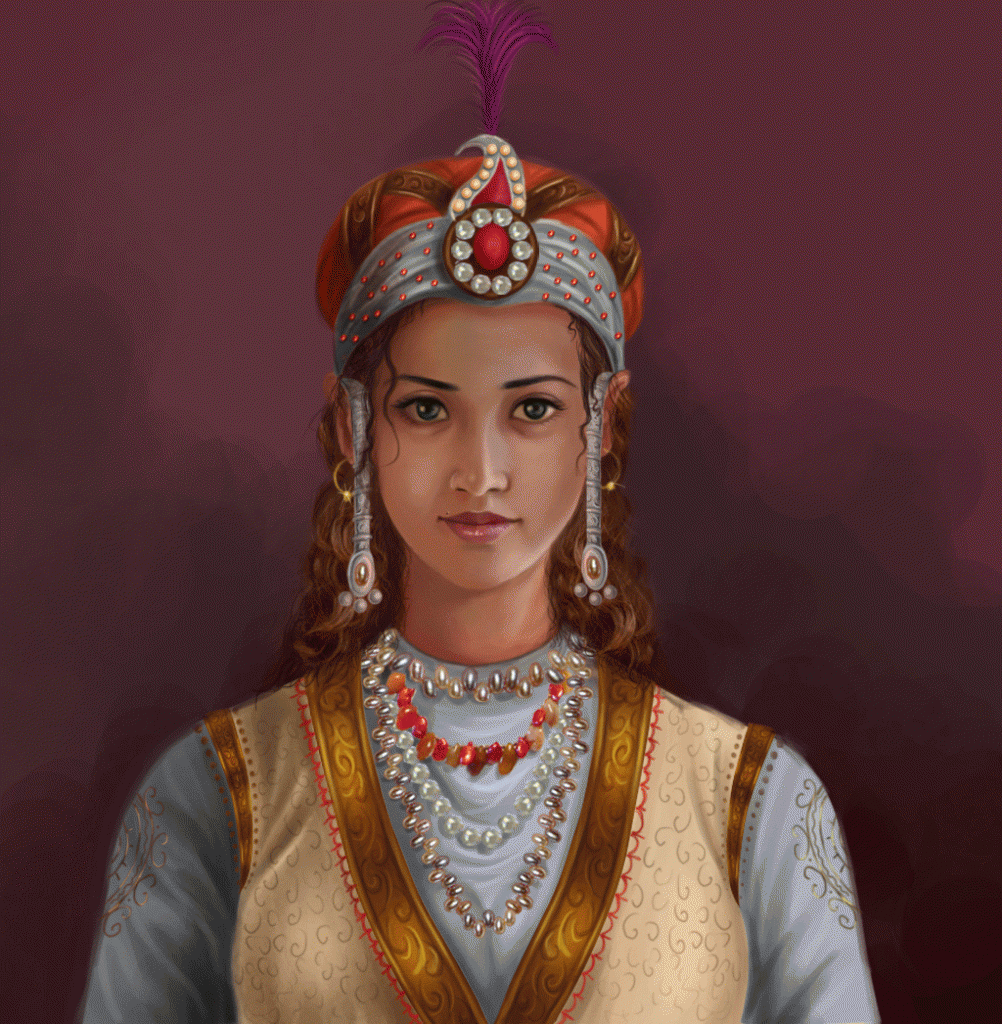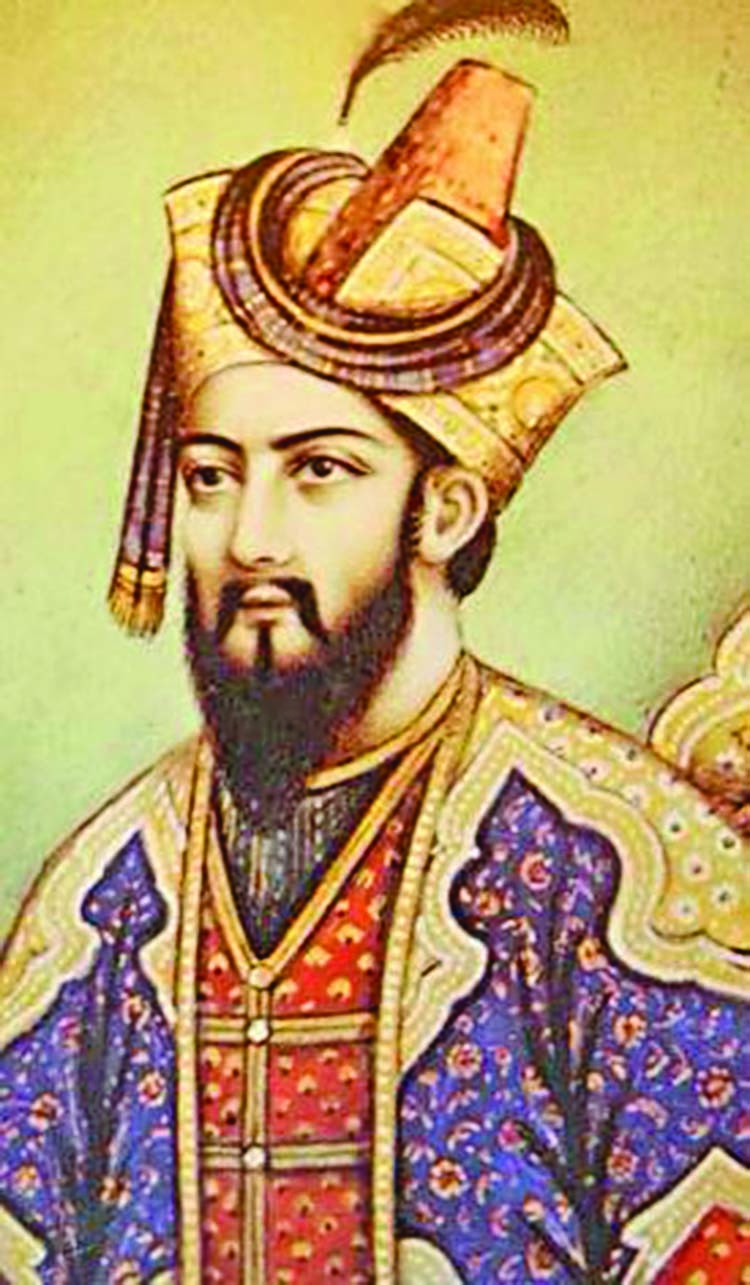He founded the Ghulam dynasty (Mamluk Sultanate) of India and was the first Sultan of Delhi.
He was Mohammad Ghori's slave.
He had been confronted with numerous difficulties from all corners of the country. He had no faith in his Turkish officer and is constantly envious of him. The Rajput's, on the other hand, while having been defeated in north India, were eagerly anticipating an opportunity to strike back.
Achievements
He was lauded as a soldier and a capable military commander. He made the decision to stay away from Central Asian policies and thus began by fortifying his position in Delhi and Lahore.
Qutb-ud-din confronted him and compelled him to return. As Yeldoz returned back again he was compelled to leave after forty years. But he dint let Yeldoz to invade any territories of India.
In Delhi, he built the Quwwat Al Islam mosque and in Ajmer, the Adhai-din-ka Jhonpra mosque.
Iltutmish (1211–28 April 1236)
Iltutmish was Delhi's true Turkish sultan. After Qutb-Uddin Aibak's death, his inept son Aram Shah was assigned to the kingdom in Lahore. One day Aram Shah was defeated as he was approaching towards Delhi . After Aram Shah's ignominious eight-month reign, Iltutmish began a brilliant reign in 1211 A.D., which lasted until his death in 1236.
Achievements
Iltutmish is regarded as one of Medieval India's most notable monarchs.
From having been a slave, he went onto shine as one of the best Sultans Of Delhi.
He defeated the forces of Yeldoz and Qu bacha, securing his place on Delhi's throne.
By adopting a smart stance and refusing to let Chengiz Khan's opponent take refuge in Delhi, he protected the country from a massive Mongolian invasion.
He created new silver and copper money, which were the sultanate period's two fundamental coinage system.
His most significant achievement was Khalifa's Investiture of him.
Near 1230, he constructed the Hauz-I Shamsi reservoir in Mehrauli. He finished the Qutub Minar, which Qutubuddin Aibak had begun.
Razia Sultan (10 November 1236 – 14 October 1240 )
Razia Sultan was the first Muslim woman to be a contender for the throne of Delhi. In 1236, she took over the Sultanate of Delhi from her father Shams-ud-din Iltutmish.
Razia Sultan was born in 1205 and reigned over the Kingdom between 1236 and 1240.
Achievements
Raza Sultan, like her father, was a brilliant administrator, brave, and a warrior. She sat in an open durbar disguised as a male. She had the qualities of a monarch and was an excellent ruler. Razia Sultana established legal and total peace in her dominion as a successful ruler, ensuring that everyone observes the rules and regulations she established.
She attempted to strengthen the nation's foundation by improving trade, constructing streets, and digging wells, among other things. She also established schools, institutes, exploration centers, and open libraries to help researchers work on the Quran and Muhammad's traditions.
Balban Reign (1266–1286)
Balban ascended the kingdom in February 1265 AD, upon his master's death. Balban was an Iltutmish slave who belonged to the Turkish Illabari tribe. Balban governed the empire with an iron fist, crushing the Mewatis and punishing the commanders.
Achievements
Balban controlled the empire to a zealous determination, mashing the Mewatis and discipline his officers. He promoted the Iranian Divine Rights idea, which stated that Sultan was God's representative on Earth.
He stopped the Corp of Forty's power; he prevented Ulemas from interfering in the state's political activities; and he prohibited Hindus from joining the army or other institutions of authority. To confront the Mongol menace, he reorganized the army of the Delhi Sultanate.
Ala-ud-din Khilji (19 July 1296–4 January 1316)
Shihabuddin Mas'ud had four sons, the eldest of them was Alauddin Khilji.
He began marching towards Delhi in the midst of torrential rain and flooded rivers, and on October 21, 1296, Alauddin Khilji was formally named Sultan of Delhi.
Ranathambor, Gujarat, Mewar, Jalore, Malwa, Mabar, Warangal, and Madurai were all subdued by him.
Alauddin defeated the Mongols every time they entered the region, in the battles of Jalandhar (12 98), Kili (1299), Amroha (1305), and Ravi (1306).
When some Mongol soldiers revolted, Alauddin's government imposed harsh punishments on the mutineers' families, including the execution of children in front of their mothers.
Ghiyas ud-Din Tughluq (8 September 1321 – February 1325)
Ghiyasuddin Tughlaq, also known as Ghazni Malik, was born in Turkey to a Turkish father and a Jat mother.
He previously served as the Governor of Ala-Uddin Khilji's border regions.
Achievements
He raised the kingdom nicely with his intellect, capabilities, and quality, and he was effective in maintaining peace and request. He was a wise and generous king.
Ghiyas-uddin took advantage of the situation and launched an assault on Bengal. He suffocated the rebels, and Bengal became a part of his empire as a result of this.
Through his strong power, he put down revolts in unfriendly provinces and restored peace, rule, and order.
Muhammad bin Tughluq (1325–20 March 1351)
From 1325 to 1351, he was Sultan of Delhi. Ghiyath al-Din Tughluq, the Turko-Indian founder of the Tughluq dynasty, was his eldest son. In the city of Multan, he was born in the Kotla Tolay Khan. The Raja of Dipalpur’s daughter was his wife.
Achievements
One of the most significant decisions he made as Sultan was to transfer the capital from Delhi to Devagiri. As a result, he proposed a large-scale relocation of Delhi residents to Devagiri, which resulted in the city’s complete collapse. Despite the failure of this initiative, Daulatabad— as Devagiri was later known—became a major center of Islamic learning.
In 1327, he moved the capital from Delhi to Devagiri (now Daulatabad), which was a significant step in his claim to the throne.
Firoz Shah Tughlaq (1351– 20 September 1388)
Firoz Shah Tuglaq, a Turkish ruler, was born in the year 1309. From 1351 to 1388, he was the ru ler of Delhi. His father's name was Rajab and he was the son of a Hindu princess from Dipalpur.
Achievements
Firoz Shah was heavily reliant on Malik Maqbul, his commander (who accepted Islam after he w as arrested). Sultan referred to him as khan-i-jahan, meaning "true ruler."Malik acted as a ruler when Firoz Shah went on expeditions.
He made a number of unavoidable concessions to the scholars and boycotted practices that the traditional scholars deemed unIslamic
.He prohibited Muslim females from visiting holy people's graves to pray.
Sikandar Lodhi (17 July 1489 – 21 November 1517)
From 1489 to 1517 A.D., Sikandar Lodi or Nizam Khan, the second ruler of the Lodhi dynasty, ruled Delhi.
He was regarded as the Lodi dynasty's greatest Sultan.
Sikandar Lodi was a valiant warrior who immediately began working to save and extend the influence of the Delhi Empire after ascending to the throne.
Achievements
He had been a brilliant winner and managed to save the Delhi Sultanate's enormity, and he vastly expanded his domain by adding Jaunpur, Chanderi, Dholpur, and Gwalior.
He founded the new city of Agra and built it with numerous mind-blowing structures and awesome buildings, and he was an incredible supporter of craftsmanship and literature. He was an excellent researcher who could write rich Persian verses.
He helped people to get education and translated amazing Sanskrit works into Persian.
Ibrahim Lodhi (1517 – 21 April 1526)
Ibrahim Khan Lodi had been an Afghan Sultan of the Delhi Sultanate, who succeeded his father Sikandar Lodi as Sultan in 1517. He was the Lodi dynasty's final king, ruling for nine years from 1526 until his death. In the Battle of Panipat in 1526, Babur, the king of Kabulistan (Kabul, present-day Afghanistan), beat Ibrahim's much larger army.
During the battle, he was killed. Babur's forces were reported to be between 12,000 and 30,000 men strong, with 20 to 24 pieces of field artillery. Ibrahim Lodi commanded a force of 100,000–120,000 soldiers, as well as 300 war elephants. After his death Mughals are the conquerors.
Written By- Pratthiksha Shree A
Edited By- Tushna Choksey



















0 Comments